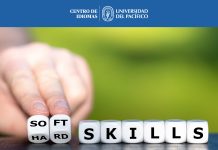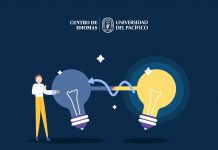One of the advantages of living the Fourth Industrial Revolution (1) is that our access to knowledge is unlimited. Any person with access to the internet can obtain information about anything in less than a minute. This chance takes us to the inescapable question: How much of what we read, we really understand? Are we, teachers, helping our students to go beyond identifying specific information, for instance? Are we teaching how to read?
Some educators may say that the answers to these questions depend on different factors: the age of our students, the place where we are teaching, and the purpose of the course we are giving among others. It is true that it is not the same to teach small kids as to teach teenagers, young adults or adults. Their cognitive development and their motivation, for instance, are different. It is not the same to teach in a school as to teach in a private language institution. In a school, all courses may be part of a cross-curricular approach whereas, in a private venue, the course stands by itself. When teaching English, we may be teaching it to people who just want to learn the language or to others that study it to sit an international exam, for example.
In any case, our main objective is to help students achieve theirs and to do so they must receive a lot of input as Krashen (2) states. One of the ways is through reading. Reading is an important source of a number of samples of what good language is as well as of the knowledge required for different purposes. We need to point out this to our pupils even if we think that it is obvious. In addition, we could show them how the language written in the texts display how language is constructed as well as how the ideas are presented by native speakers. If we help them make a deep analysis of the passages, we will aid them to find a wonderful spring to which they can always return over and over to learn from it.
Needless to say, we have to help them go beyond the well-known and useful strategies used before, during and after reading. We also have to show them how to use the metacognition while reading in order to monitor their understanding, for example.
You may want to take a look at the following articles to review some of the strategies and other important aspects of the reading process.
It is valid to say that there are people who are motivated, will read and find the information they need. Others are accustomed to finding the answer to a specific question and sometimes used to building knowledge with pieces of information as if they were making a kind of “patching reading”. The problem with that practice is that it doesn’t help much to develop critical reasoning. It is as if some are finding the pill for the pain but not curing the illness. In our case, students learn to answer questions for a text, but not necessarily know how to read. This may be observed in exams that require to answer questions which evaluate different levels of comprehension.
Thus, in addition to asking for information that requires literal or inferential comprehension, why don´t we ask questions that require the reader to make a personal response to a character or situation in the story or to the author’s purpose? With this, we will be helping students to develop their appreciative comprehension. We can always pose questions the request our pupils to make a judgment about the author’s use of language, style of writing, execution of the text, or the author’s ideas in the text. This will enable them to reach a critique comprehension of what they are reading. If we want to help our students develop an evaluative comprehension, we will need to propose questions that help them make a judgment about an aspect of the story such as a character’s actions and demonstrate or support that judgment.
Even though, it is clear that some students engage in reading in order to gain specific information and that is enough for them, our job is to enable them to go beyond and reach little by little different levels of comprehension. This will inevitably help them achieve their goals and at the same time show them the entrance of a world of wisdom and culture.
Now it´s your turn:
What else can we teach about reading?
Is it easy to teach how to read? Why? Why not?
(2) Krashen, Stephen D. Second Language Acquisition and Second Language Learning. Prentice-Hall International, 1988.
(3) Estrategias de comprensión lectora: enseñanza y evaluación en educación primaria
Estimated reading time: 4 minutes, 4 seconds












muy buen artículo, este material me va a servir para mi tesis de maestria.
Muchas gracias por seguirnos.
Great
Comments are closed.